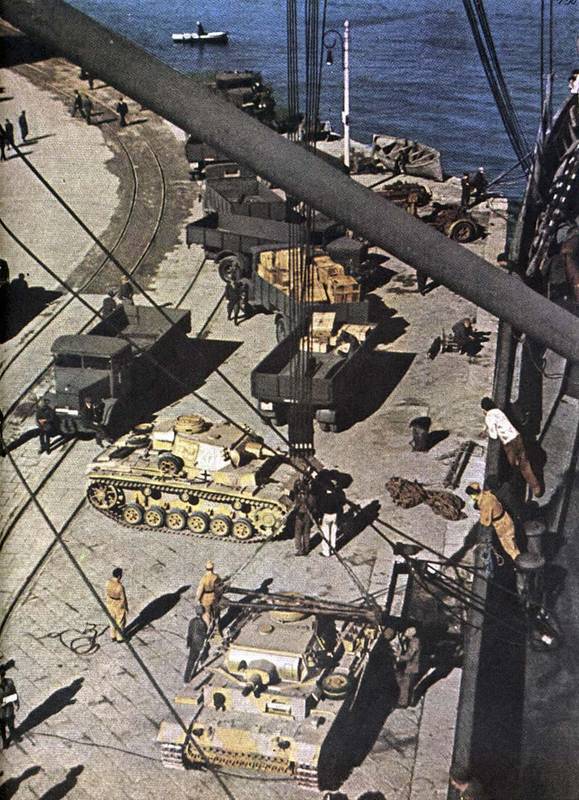We know from photographic evidence such as this photo on Achtung Panzer that there were indeed vehicles sent to N. Africa in the original Panzer Gray when the first units were dispatched in Feb of 1941.

We also know that it was common for vehicles, such as this one below, to have mud applied over the panzer gray to help disguise it. (Photo taken from http://www.afrikakorps.org site).

It's commonly cited on many sites on the 'net and in numerous books that the Tropen schemes ordered as of March 1941 were that all vehicles being sent to N. Africa were to be painted with a base color of RAL 8000 gelbbraun with patches of RAL 7008 graugrun covering 1/3 of the vehicle. For vehicles already in theater, the panzer gray was to be over painted (why you often see the gray patch under the DAK symbol or unit markings). This stayed in effect until March of 1942 when the scheme was switched to RAL 8020 braun and 1/3 grau RAL 7027. So the question is, with these orders in place, why do modelers not finish Afrika vehicles in two tones?
My guess is that the contrast between the two colors (even though the names suggest theres should be higher contrasts...we know the names assigned can be misleading vs. the actual colors) don't show up under dust or in b/w photos and so the assumption is that all N. Afrika vehicles were two-tone schemes.
Take for example the color chips from the afrikakorps.org site:

And compare them to the Testors Model Master site showing the same colors and matching them up to RAL codes where Afrikabraun=RAL 8020, Afrika Dunkelgray = RAL7027, Afrika Grunbraun=RAL 8000, and Afrika Khakibraun=RAL 7008:
http://www.testors.com/category/136417/WWII_German_Panzer_Colors
If you overlay those two tones together as called for in the orders and then add dust on top for good measure...the photos would show just a single monotone color underneath I think? Is this why we don't see color finishes incorporating the two-tone schemes as ordered for Tropen schemes in Afrika as a standard among model builders? Is it also why we see only one color used from 1941 to 1943 regardless of vehicle type or year of introduction so that schemes are the same whether it's a Pz I or a Pz IV F(2)?

















































